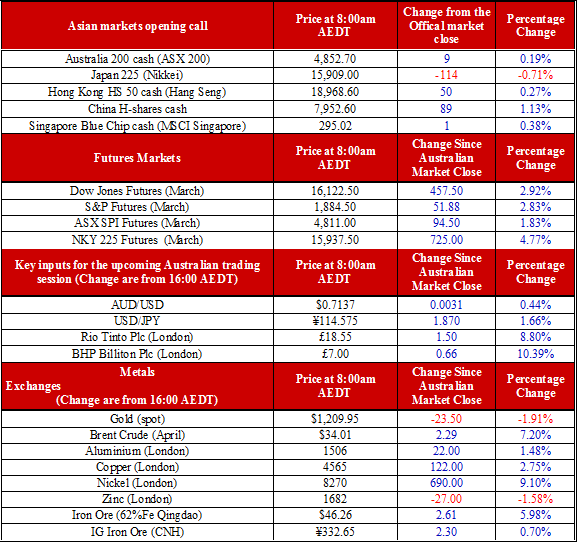Back to ‘bankics’
What a difference a rally makes – reading the headlines this morning would make you think the world was fixed.
The fact is the US was away for Presidents’ Day to lead from the western side of the Atlantic and a dose of rationality suggest the macro overreach is still a very real problem. However, the fear and pessimism factors versus slowing macro themes are two very different things, which explain the overreach.
Fear factors:
China – Trade balance was weak, and the export figures illustrate demand isn’t there on a global basis. However, the Zhou effect cannot be ignored and the CNY fix coupled with his comments should settle the fear factor around an August 2015-styled devaluation and capital outflows.
Oil – The economic impact of oil on the likes of the US and Europe is an interesting one. It is a large creator of employment and GDP – particularly for the US. It’s a sign of risk-on activity as manufacturing firms increase consumption during those times. However, low oil is double-edged, consumer spending is positively impacted, as are firm costs. Think back to 2013 when the headlines were ‘high oil prices will push nations into recession’, now it’s ‘low oil price will push nations into recession’. Fear over rationality?
Negative rates – The decisions by the Bank of Japan and European Central Bank to make the deposit rate negative following the likes of the Swiss National Bank, Riksbank and Nationalbaken into negative rates has been met with an interesting response. Markets have interpreted negative rates as a possible funding crisis issue for private banks as it retards normalised operations around depositing funds with the central banks. Fear over rationality?
Back to bankics:
European banks have been the epicentre of the fears around negative rates. The interesting point here is that European banks can more than handle coupon payments, funding is highly liquid, money markets haven’t shown any signs of distress, and the 2012 TLTRO’s emergency liquidity funds are still in the main unused.
Looking more broadly, banks are consistently delivering on ‘quality’. Asset values are yet to see the forecasted upswing in bad and doubtful debts. Loan books remain very solid and more importantly, deposits are increasing which lowers reliance on wholesale funding.
Banks are ‘safer’ than ever; the Basel III requirements now see some of the highest levels of capital on balance sheets in the modern bank world.
Australian banks are even more interesting; although pay-out ratios are moderating, funding, asset quality and exposure to residential and services loans are overpowering the risks in energy and material loans.
Banks are normally priced on a price-to-earnings and a price-to-book basis. There are several European banks trading on a 0.6 times price-to-book ratio. This is cheap historically and rationally. US banks are trading at discounts-to-book of around 0.85 times book. Jamie Dimon’s 500,000 share pick of JP Morgan looks to be a value-based opportunity.
Banks globally have lost between 13% and 30% on systemic fears. The underperformance in banks is also something global indices are not used to in this environment. The fear and pessimism baked into markets particularly in this space looks, on paper anyway, as a value option not seen since 2011.

